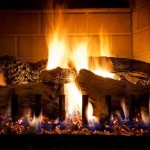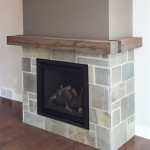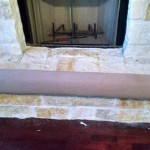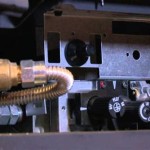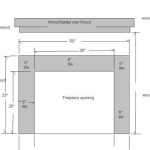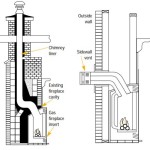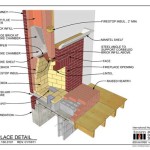Fireplace Hearth Vents: Optimizing Fireplace Functionality and Safety
Fireplace hearth vents represent a critical, yet often overlooked, component of a well-functioning and safe fireplace system. These vents play a crucial role in managing airflow, mitigating heat buildup, and contributing to the overall efficiency of the fireplace. Understanding the purpose, types, and proper installation of hearth vents is essential for homeowners seeking to maximize the benefits of their fireplace. The following article will explore the significance of fireplace hearth vents and their impact on the performance and safety of the fireplace.
A fireplace, while providing warmth and aesthetic appeal, generates substantial heat. Without proper ventilation, this heat can concentrate within the firebox and surrounding structure, potentially leading to overheating, material degradation, and even fire hazards. Hearth vents provide a pathway for air to circulate, dissipating excess heat and maintaining a safer operating temperature. In addition, proper ventilation contributes to more complete combustion, reducing the build-up of creosote, a flammable byproduct of burning wood that can accumulate in the chimney and pose a fire risk. Furthermore, hearth vents help to counteract the negative pressure created by the rising hot air, ensuring a more consistent draw of air for combustion.
The Primary Functions of Fireplace Hearth Vents
Hearth vents serve several key functions that contribute to the safety, efficiency, and longevity of a fireplace system. These functions can be broadly categorized as heat dissipation, combustion air regulation, and moisture control. Each of these functions plays a crucial role in maintaining a healthy and effective fireplace.
Heat Dissipation: The primary function of hearth vents is to dissipate excess heat generated by the fire. As the fire burns, it produces intense radiant heat that can raise the temperature of the surrounding materials, including the hearth, firebox walls, and even adjacent structural components. Hearth vents, strategically placed, allow cooler air to circulate around these heated areas, carrying away the excess heat and preventing the buildup of dangerous temperatures. This is particularly important in fireplaces with combustible materials nearby, such as wood framing or flooring. Adequate ventilation prevents these materials from reaching their ignition point, significantly reducing the risk of fire. The vents accomplish this by creating convective currents; cool air enters the vents, is heated by the fireplace, and then rises and exits, carrying heat away from the system.
Combustion Air Regulation: A fireplace needs a constant supply of air to fuel the combustion process. Without sufficient air, the fire will smolder, producing excessive smoke and creosote. Hearth vents can contribute to regulating the airflow to the firebox, ensuring a more complete and efficient burn. While the primary source of combustion air is typically the damper opening or dedicated air inlets, hearth vents can provide supplementary air, particularly in tightly sealed homes where indoor air pressure can be negative. This supplementary airflow helps to maintain a stable and consistent fire, reducing the production of smoke and creosote. Furthermore, by optimizing combustion, hearth vents contribute to improved fuel efficiency, meaning less wood is needed to achieve the desired level of heat output.
Moisture Control: Fireplaces, particularly those in older homes, can be susceptible to moisture intrusion. Moisture can damage the firebox, chimney, and surrounding structure, leading to deterioration and potential safety hazards. Hearth vents can help to promote air circulation, which can reduce the accumulation of moisture in and around the fireplace. By allowing air to flow freely, the vents help to dry out any dampness that may be present, preventing the growth of mold and mildew. This is particularly important in areas with high humidity or in fireplaces that are not used frequently. Maintaining a dry environment also helps to prevent the corrosion of metal components within the fireplace system, extending their lifespan.
Types of Fireplace Hearth Vents
Hearth vents come in a variety of designs and materials, each with its own advantages and disadvantages. The selection of the appropriate type of vent depends on the specific requirements of the fireplace, the aesthetic preferences of the homeowner, and the overall design of the room. Common types include metal vents, stone vents, and custom-designed vents. The materials used and the method of installation influence their effectiveness and appearance.
Metal Vents: Metal vents are a common and cost-effective option for fireplace hearth ventilation. These vents are typically made of steel, aluminum, or cast iron and are available in a range of sizes, shapes, and finishes. Metal vents offer good durability and heat resistance, making them suitable for use in high-temperature environments. They can be easily installed during the construction or renovation of a fireplace. Metallic vents, typically constructed of steel with powder coat finish, offer good airflow and are very durable. Metal vents, such as those made from cast iron are also visually appealing. Metal vents are typically easier to clean and maintain than other types of vents. However, metal vents can sometimes be prone to rusting or corrosion, particularly in humid environments. They can also conduct heat, potentially becoming hot to the touch during fireplace operation.
Stone Vents: Stone vents provide a more aesthetically pleasing option that blends seamlessly with the fireplace hearth. These vents are typically made of natural stone, such as granite, marble, or slate, and can be custom-cut to match the existing stonework. Stone vents offer excellent durability and heat resistance, and they can add a touch of elegance to the fireplace design. They tend to look more integrated into the overall fireplace design compared to metal vents. Stone has insulating properties that can help reduce the risk of burns from surface contact. However, stone vents can be more expensive than metal vents, and they may require specialized installation. They can also be more difficult to clean and maintain.
Custom-Designed Vents: Custom-designed vents offer the greatest flexibility in terms of aesthetics and functionality. These vents can be made of a variety of materials, including metal, stone, and composite materials, and can be designed to meet the specific needs of the fireplace. Custom designs allow for the integration of unique patterns, shapes, and sizes, allowing the vents to seamlessly blend into the fireplace design. They are ideal for homeowners who want to create a truly unique and personalized fireplace. However, custom-designed vents can be the most expensive option, and they may require a longer lead time for fabrication and installation. Their cost also increased because of the need for professional advice in their design and installation.
Optimizing Fireplace Hearth Vent Installation and Maintenance
Proper installation and maintenance of hearth vents are crucial for ensuring their optimal performance and longevity. Incorrect installation can compromise their effectiveness, while neglect can lead to damage and reduced functionality. Careful planning and attention to detail are essential for maximizing the benefits of hearth vents.
Installation Best Practices: When installing hearth vents, it is important to consider their placement, size, and orientation. Vents should be positioned strategically to maximize airflow and heat dissipation. They should be located near the firebox to capture the hottest air, but also spaced to allow for adequate circulation. The size of the vents should be appropriate for the size of the fireplace and the amount of heat it generates. In general, larger fireplaces will require larger or more numerous vents. The orientation of the vents should be such that they allow air to flow freely in and out. Vents should not be obstructed by furniture, rugs, or other objects. It is advisable to consult with a qualified fireplace professional to ensure that the vents are installed correctly and safely. Correct placement ensures that the fireplace performs according to the design specifications.
Routine Maintenance: Regular maintenance is essential for keeping hearth vents in good working order. This includes cleaning the vents to remove dust, debris, and soot. Clogged vents can restrict airflow, reducing their effectiveness and potentially creating a fire hazard. The frequency of cleaning will depend on the usage of the fireplace, but it is generally recommended to clean the vents at least once a year. It is also important to inspect the vents for signs of damage, such as cracks, rust, or corrosion. Damaged vents should be repaired or replaced promptly to prevent further deterioration. Proper cleaning guarantees that the cooling and air circulation functions of the vents are not obstructed. Simple cleaning procedure will help to maintain ventilation.
Safety Considerations: When working with fireplace hearth vents, it is important to take certain safety precautions. Always wear gloves and eye protection to prevent injury from sharp edges or debris. Ensure that the fireplace is cool before attempting to clean or inspect the vents. Never use flammable cleaners or solvents on the vents. Keep children and pets away from the fireplace while it is in use or while the vents are being cleaned or inspected. Consider installing a mesh screen over the vents to prevent small objects from falling through. These safety precautions protect individuals working on the vents and maintain the operational reliability of the fireplace.

Fireplace Vent Types Explained Magic Touch Mechanical

What Are The Best Ways To Vent A Gas Fireplace Zoroast

Remove Or Cover Up Old Heatilator Vents

What Is A Direct Vent Fireplace Vertical Chimney Care

Fireplace Venting What Homeowners Need To Know

12 Types Of Gas Fireplaces You Need To Know

Traditional Direct Vent Inserts White Mountain Hearth

Moving Hot Air How To Heat Your House Using Fireplace Napoleon

Our Diy Fireplace Makeover Framing Vents Part 2 Four Generations One Roof Blog

How Direct Vent Fireplaces Work Napoleon
Related Posts

